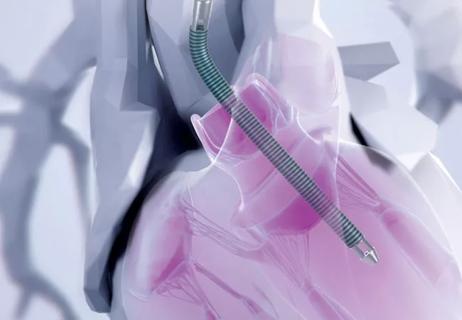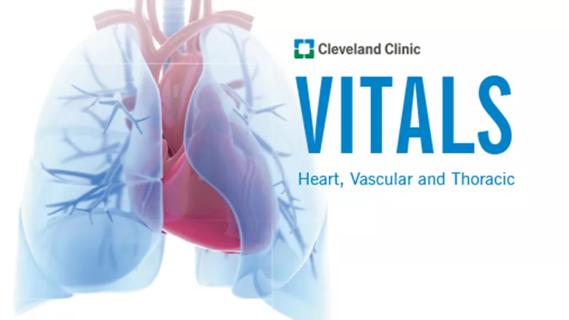Advertisement
How two of our surgeons are working for care equity, greater representation in research and practice

As a high school student interested in medicine, Xiaoying Lou, MD, participated in a career shadowing program where she was matched with a female heart surgeon. “I got to scrub in with her, touch the heart and participate in her patient visits,” Dr. Lou recalls. “It transformed me. After that, I was driven to become a cardiac surgeon.”
Advertisement
Cleveland Clinic is a non-profit academic medical center. Advertising on our site helps support our mission. We do not endorse non-Cleveland Clinic products or services. Policy
She says the experience points to the importance of having female mentors and role models for young women entering the field of cardiothoracic surgery. It’s just one reason she and Donna Kimmaliardjuk, MD, now both cardiothoracic surgeons at Cleveland Clinic, are working to address sex-related disparities in cardiac care.
“We know that women are often underdiagnosed or misdiagnosed when it comes to heart disease, and they tend to be diagnosed at much later stages,” Dr. Kimmaliardjuk says. “We also know that women are usually underrepresented in studies and clinical trials that look at heart disease.”
As relative pioneers in a specialty historically dominated by men, Drs. Kimmaliardjuk and Lou said they feel a sense of responsibility not only to advocate for female patients but also to mentor the next generation of women entering cardiac surgery.
“Research has shown that outcomes for women are better when they’re treated by women,” Dr. Kimmaliardjuk says.
A key area of focus for Dr. Kimmaliardjuk is highlighting sex differences in heart disease. It’s important for both patients and providers to recognize that women may present with different symptoms than men do, which can lead to misdiagnosis of conditions like angina and myocardial infarction.
Because women may present with symptoms that differ from “classic” chest pain, she notes, they may experience delayed diagnosis or providers may dismiss their symptoms as anxiety or indigestion.
Advertisement
Within cardiac surgery, female patients are less likely than male patients to receive multi-arterial grafts for coronary bypass, one of Dr. Kimmaliardjuk’s subspecialty interests. She notes that this is despite abundant evidence that patients who receive bilateral internal thoracic artery grafts have better long-term outcomes than patients who receive only a single graft.
Emerging research also suggests that women may benefit more than men from off-pump coronary bypass, she adds, even though the procedure is less often done off-pump in women because it is thought to be more complex and challenging in patients with smaller arteries.
“We know that women have historically not gotten the same optimal surgical decision-making as male patients, and that’s still the case to this day,” Dr. Kimmaliardjuk says. “It’s important to ensure that we have equity in treatment and outcomes.”
Guidelines should also be re-evaluated to ensure that they’re appropriate for both female and male patients, Dr. Kimmaliardjuk says. For example, current aortic aneurysm guidelines set fixed size thresholds based on aneurysms that have been measured in men, even though their bodies are usually larger than women’s bodies.
“There is now a movement to evaluate not just based on one singular measurement but to index it appropriately to the patient’s size, which can potentially lead to earlier intervention on aneurysms in women,” she notes.
It’s also vital to improve representation in research, she adds. Women are routinely understudied and underrepresented in clinical trials, resulting in less evidence supporting diagnosis and treatment decisions for female patients than for men. “We really should be ensuring that women are representing as close to 50% of study participants as possible,” she says.
Advertisement
Both Drs. Kimmaliardjuk and Lou say they have seen some progress. Dr. Lou, whose subspecialty focus is aortic surgery, is currently involved in a study that uses an advanced MRI machine to image the aorta in real time and assess blood flow dynamics during exercise. She notes that the study will evaluate sex and age differences.
“We know there are differences between women’s and men’s aortas, and that the aorta changes with age as well,” Dr. Lou explains. “If we can understand those differences, we can develop a more personalized approach to aortic surgery and managing aortic conditions in the future.”
Institutions can work to reduce sex disparities in cardiac surgery by hiring female surgeons, highlighting their achievements and supporting them in advancing their careers, Dr. Kimmaliardjuk says, adding that mentorship can be especially beneficial.
Inspired by her own early experiences, Dr. Lou has made it a priority to mentor trainees and young surgeons from a variety of backgrounds. “I’m passionate about that, because mentorship started this whole journey for me,” she says. “I want everyone to have a good mentor, male or female, but especially people who historically have not had role models who look like them.”
Female trainees often seem to be harder on themselves and can benefit from mentorship that helps them build their confidence and receive feedback without getting defensive or self-critical, Dr. Lou notes. “It’s a matter of not losing yourself, but asserting yourself and doing it in a way that is also team-focused,” she says. “That dynamic can be really hard for a female trainee.”
Both surgeons emphasize that having diversity in a cardiac surgery department — Dr. Lou is a Chinese-American immigrant while Dr. Kimmaliardjuk is Inuk (Inuit) — isn’t a matter of checking a box; it’s about improving patient care.
“Being a minority and female in this environment allows me to see a different side of patients who come through the door,” Dr. Lou says.
And for young women who aspire to be heart surgeons, Dr. Kimmaliardjuk encourages them to follow their dreams. “It’s fantastic that there are now two women cardiac surgeons in a heart program like Cleveland Clinic’s,” she says. “Things are changing. If this is what you want to do, do it and don’t let anyone tell you otherwise.”
Advertisement
Advertisement

Preoperative Impella 5.5 placement can provide a critical safety net for high-risk patients

Cleveland Clinic study points to need for new strategies to curb addiction relapse

Findings support emphasis on markers of frailty related to, but not dependent on, age

Check out our latest volume and outcomes data in these key areas

ACC panel issues call to action to achieve CV health equity in an underserved population

TAVR explant demands multidisciplinary expertise

Judicious application yields a 99.7% repair rate and 0.04% mortality

Large single-center series demonstrates safety and efficacy for extending procedure